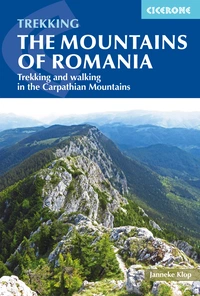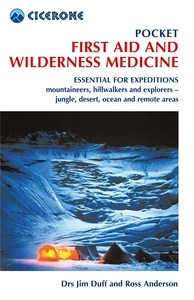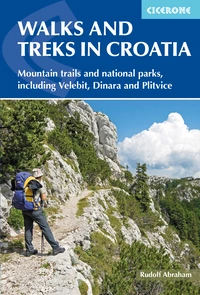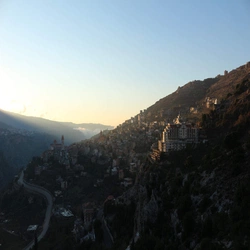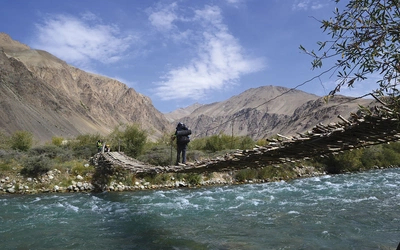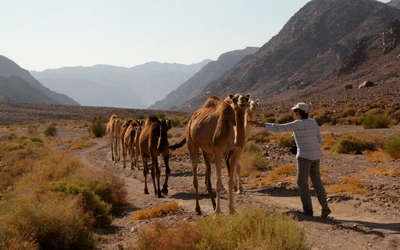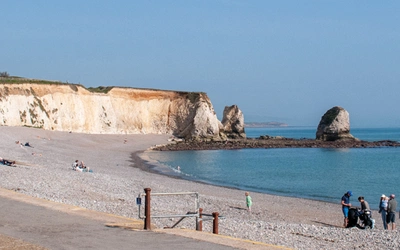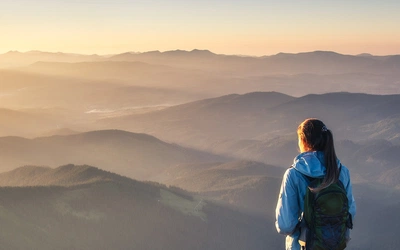Walking Egypt’s most popular mountains
One is Egypt's highest mountain, and one is its most popular. But, despite being so close to each other, these two mountains attract very different audiences. Christine Gordon climbed both to find out why.
Most people associate Egypt with the Pyramids and rolling desert, not craggy mountains. But Sinai, the extreme eastern part of the country, has mountains that offer interesting walking opportunities. My trip to Egypt was for only two days as part of a longer holiday to Israel and Jordan, but this short time allowed me the chance to walk up two of Egypt’s mountains. One is a well-known hill that is climbed by thousands of people every year, and the other, at a height of 2,629m, is Egypt’s highest and is climbed by perhaps 100 people per year. Religion plays a part in the attraction of both mountains, but the similarities end there.
Mt Sinai, where Moses received the Ten commandments
Mt Sinai (2285m), or Mt Moses as it is known locally, is one of the most sacred places for Jews, Christians and Muslims and has a church and a mosque on the summit. It is reputed to be the mountain where Moses spent 40 days and nights communing with God before descending with tablets of stone inscribed with the Ten commandments and this is an attraction for both tourists and pilgrims. There is a monastery and the ‘burning bush’ at the bottom of the mountain. You can visit the monastery, although I did not do this.
There are two paths to the summit: the ‘path of penitence’ involves a climb up 3,750 steps, while another, easier, route has a gently rising path to the last 750 steps. This path is clearly marked, and you can hire a camel to take you as far as the summit steps. There are Bedouin tea rooms on the way where you can stop for a rest and buy some souvenirs. Despite this, you are required to employ a guide for this walk.
There are two popular times to climb Mt Sinai: walks that allow you to be there for either sunset or sunrise, the latter being the most popular. We climbed the mountain for sunset, setting off at approximately 16.00 and descending in the dark.
Starting at this time, we were alone on the mountain for the first 30 minutes and I was beginning to think that tales of meeting 1000 people were a gross exaggeration and I was congratulating myself that we would be on our own for sunset. The first thing that began to disabuse me of this idea was seeing several camels on the horizon above and then, turning a corner, passing the first tea room. Another corner and my dream was shattered when I saw just in front a large group of slowly ascending tourists, a group that grew larger the further we walked.
However, my disappointment was alleviated on the summit when some of the pilgrims, Indonesian Christians, performed a small ceremony and sang hymns as the sun set. It seemed like a fitting tribute to a mountain that has links to three major world religions.
My disappointment was further alleviated when our guide pointed to a nearby mountain, telling us that we were looking at Egypt’s highest mountain and that, although much more challenging than Mt Sinai, it was possible to climb it in a day. As a Munro bagger, the temptation was too much, and I signed up a guide to lead me up Mount Catherine, or Mt Caterina, as it is known locally the next day.
Mt Caterina, Egypt’s highest mountain
What a difference between these two mountains. As I did not have a map (accurate maps do not seem to be available), I could not have climbed the mountain without a guide and I met no tourists during the walk.
Indeed, the only people I saw all day were three local women tending their goats, and I had a brief glance into a summit hut where two Christian hermits were living, one of whom welcomed me to the top of Mt Caterina.
The walk starts in Caterina village, initially on a good path built for locals rather than tourists. This path is quite steep but well-graded and leads to a flatter area. My guide told me that locals use the path to take their goats to graze on the mountain and that, in the summer, locals grow vegetables in mountain gardens that lie fallow for the rest of the year. The walk takes you past some of these gardens; from here, the path is less distinct but flatter. Several kilometres later, you arrive at the bottom of the final climb to the summit, which looks surprisingly close.
Do not be fooled; it took a further three hours to reach my goal and involved climbing up a shoulder and behind a ridge to reach a basin where there is an access road to communication paraphernalia on a secondary summit a few metres from the main summit. Having reached the access road, the way was clear, but the altitude affected the speed at which I could climb, and I made slow progress to the final push, which involved leaving the access road and walking up on a good path past the home of the aforementioned hermits to the summit, which houses a Russian/Greek orthodox church.
There is a log book at the summit and I took pleasure in signing my name with a ‘Greetings from Scotland’ message. My guide suggested that we descend by another route that starts with a good path but then deteriorates to a short scrambly section to reach the ‘garden path’. Arriving back my guide invited me into his house for a well-deserved and needed cup of tea.
In conclusion, if you want an easy ascent and to follow the crowds, climb Mt Sinai; if you want a ‘proper’ experience on a challenging mountain away from the crowds, go for nearby Mt Caterina. Or, of course, like me, you could climb both!
Practical considerations
St Caterina village, near the base of both mountains, is served by a good-quality asphalt road that runs between Nuweiba and Dahab on Sinai’s east coast. There is an occasional East Delta bus service between Dahab and Cairo, which passes the village, but services have been cut back since political unrest in Egypt caused a decline in visiting tourists and bus services are now very unreliable. Bedouin Bus operate a twice-weekly (Sunday and Wednesday) minibus from St Caterina to Nuweiba. This is aimed at the local market, departing from St Caterina early morning and then returning from Nuweiba in the evening, and is little used by tourists. We reached St Caterina by private taxi from the Israel/Egypt border, crossing at Taba near Eilat. A comfortable 3hr/220km journey cost us $50 each way (highly negotiable).
Accommodation
There are several places to stay in St Caterina, including a rather run-down three-star hotel, various guesthouses and rooms to let in the monastery. Most visitors arrive in tour groups on charter buses and do not stay the night.
Guided or not guided?
Theoretically, a guide is required to climb both mountains and they can be found in the village or outside the monastery. While this is useful in finding your way up Mt Caterina, the path up Mt Sinai is wide and easily navigated, and a guide is not necessary, although required. Take a torch if you plan to walk up in the dark for sunrise or descend after viewing sunset.
Foreign Office Advice
The area covered by these walks and the approach route from the Israel/Egypt border at Eilat/Taba via Nuweiba are in the Egyptian province of South Sinai. With regard to the foreign office travel advice, most of South Sinai falls in an orange area (warning against all but essential travel). Our author considers this to be unreasonable as thousands of tourists visit this area every week, mostly staying in the costal resort towns of Nuweiba or Dahab. From there, many make organised one day excursions by tour bus to St Caterina monastery and mount Sinai. Security is very tight with frequent check-points on all the roads.
The extreme southern tip of South Sinai around Sharm el Sheik is green (take care but no warning against travel). By contrast, the neighbouring province of North Sinai is a no-go area with frequent terrorist attacks and is shown in red (warning against all travel). Even here most of the problems are on the north coast and around the border with Gaza, over 300kms of empty mountainous desert away from St Caterina.
Always check with the foreign office or similar before travelling and ensure you have sufficient insurance.

